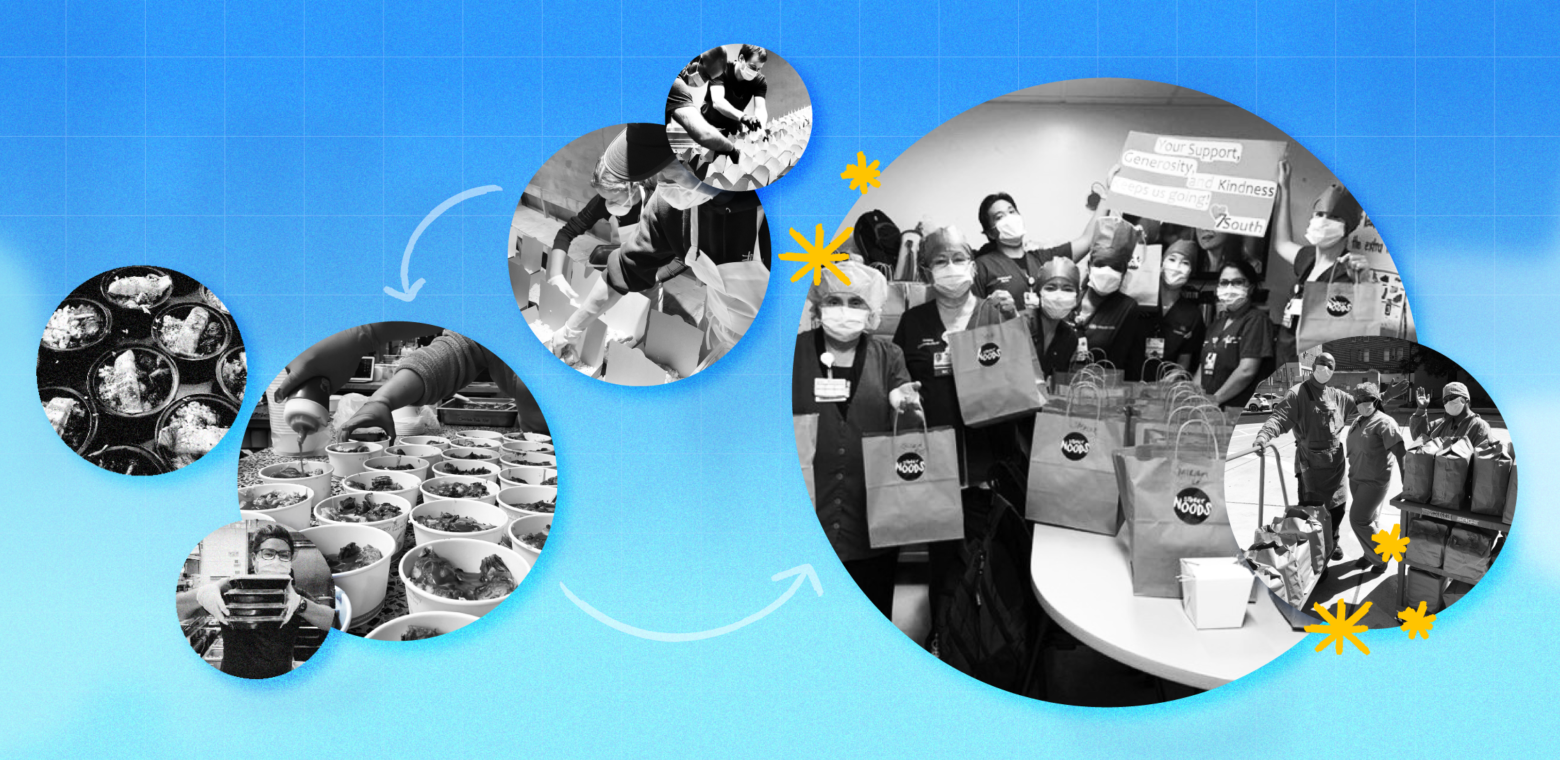How talent and technology helped Frontline Foods rapidly expand its healthy meal delivery service to emergency responders.
When crises strike communities, people respond – whether it’s front-line workers going into dangerous environments, or companies and their personnel contributing to the cause with brainpower, donations, or manual assistance. We’ve seen plenty of companies pivot in this direction since the coronavirus pandemic arrived, but an even rarer phenomenon has also emerged: talent coalescing into completely new entities to meet unexpected needs.
Frontline Foods is a vivid example of this kind of spontaneous self-organization. The group, working from community donations and which now includes chapters in 61 cities across the United States, delivers hot, healthy meals to frontline workers and emergency responders. In addition, the service provides much needed work for shuttered restaurants who supply the food. Since beginning in early March, the group has delivered more than 480,000 meals to 980 frontline teams, supporting more than 1,000 restaurants along the way.
Using your connections
The effort began when Sydney Gressel, a pediatric nurse at the University of California, San Francisco started talking with friends Frank Barbieri and Ryan Sarver, Bay Area digital-media entrepreneurs, about the challenges facing frontline workers. As the pandemic spread, Gressel said, these essential workers weren’t able to get food while working because of shelter-in-place rules and restaurants closures. But, organizing fresh, prepared meals would help alleviate the problems facing both the workers and the community’s restaurants. The three friends realized that other communities around the country were in very similar situations, and got into action.
According to Caroline Barlerin, a corporate social impact consultant who came on early to help Frontline Foods, the group began to organize within days of the idea forming, and it went nationwide almost immediately thanks to powerful communication and organization tools.
“The people who initially kicked this off were pretty technically savvy,” says Barlerin. “They’re familiar with things like wikis and how to use tooling. And others knew how to build web-based applications and commerce tools and things like that. So the infrastructure naturally evolved, but probably much faster than most nonprofits.”
Just three volunteers needed to form a chapter
Individuals around the country who expressed interest were able to form chapters with just three volunteers: one responsible for managing the hospital relationships, one for the restaurant relationships, and one for the overall group coordination. The group’s resources included Slack for primary communication, Trello for project management, Zoom for video conferencing, and Confluence as its “wiki.” Plus the group’s “Backline” app: which helps volunteers coordinate fundraising and deliveries. Frontline also partnered with World Central Kitchen, a charitable organization led by chef José Andrés, to further help scale their operations and overall reach.
There was also, of course, a natural momentum that came from volunteers being sidelined from their usual activities coupled with an intense desire to help. In Wichita, Kansas, for example, a pair of sisters who worked at a hospital and a company eager to contribute, established a chapter on a Tuesday and began delivering food that Friday. Similarly, chapters in Dallas, Atlanta, Baltimore, Indianapolis, Pittsburgh, and elsewhere capitalized on the fundraising talents of volunteers, the networking skills of others, and the raw energy of still more. “One of our partners in Alabama says he’s learned more in the first two weeks of volunteering with the team than he has in his two-year graduate degree program – just don’t tell his teachers,” Barlerin says. “There’s a generosity of spirit of trying to help give to each other.”
While having people from Slack, Google, Twitter, Atlassian, and other tech powerhouses as volunteers and coordinators helped things ramp up quickly, the group made sure that the beneficiaries were on the same page. They made sure all personnel were able to keep pace and use the tools effectively, since not everyone involved had the same familiarity with tech.
“We made sure to emphasize the voices of the restaurants and the healthcare frontline workers from the beginning,” says Tricia Iboshi, an operations executive with LTN Global. “We wanted to be sure we honored both parties’ needs while addressing changing logistics, protocols, and schedules on sometimes a real-time basis.”
It shouldn’t end here
To keep the momentum going, the leaders instituted weekly nationwide all-hands meetings for information-sharing and strategizing, and efforts to secure funding continues in anticipation of additional waves of the pandemic. The group is also working to manage fatigue for the people who are taking on big commitments while still managing their own jobs and families, and starting training programs for using the digital tools. “I was a very junior Slack user, and I got called out a couple of times for not tagging people correctly and that sort of thing,” Iboshi says. “But we’re all working to help each other out, ensure people are communicating, and keep the focus on the cause.”
The organization is already looking forward to how they can improve their organization and workflow, should there be future spikes in the current pandemic or perhaps for the next large-scale crisis. Hopefully, that preparation will be more manageable, especially since there weren’t many friction points the first time out of the gate. It’s a testament to the power of talent, quick thinking, and extreme motivation to make something positive happen in an otherwise challenging situation.
